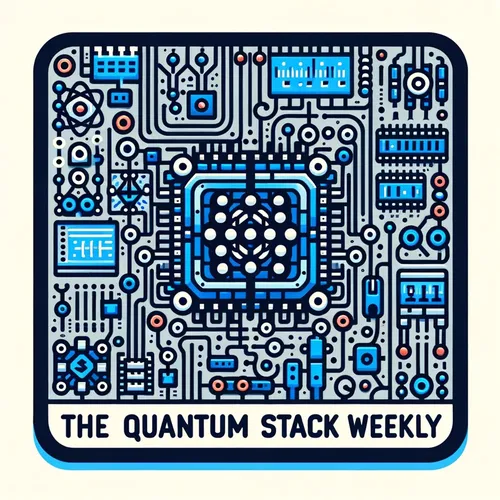Quantum's Colorful Leap: Carbon Molecules Unveil Spin States in Light
- Author
- Quiet. Please
- Published
- Sun 03 Aug 2025
- Episode Link
- https://www.spreaker.com/episode/quantum-s-colorful-leap-carbon-molecules-unveil-spin-states-in-light--67237241
This is your The Quantum Stack Weekly podcast.
Fresh off the quantum wire: this week, my lab coat is figuratively—and literally—buzzing with the energy of one of the most dramatic developments in quantum computing this summer. Early yesterday, researchers from Cambridge and Paris-Saclay unveiled a new carbon-based molecule that couples electron spin directly to emitted photons. In everyday terms, imagine a molecule whose color signals its quantum spin state—you flip a switch, and orange or near-infrared light spills out, betraying its innermost quantum secret. It’s like holding a traffic light on the atomic scale, with each glow transmitting quantum information, readable to the naked eye or a simple sensor.
Why does this matter? Here’s the drama: current quantum sensing often relies on imperfect and expensive materials, like nitrogen-vacancy diamonds, whose signals demand complex and costly detection gear. But this new molecular marvel translates its quantum state into a visible, color-coded beacon, stripping away layers of complexity and cost from quantum sensors. Imagine low-cost, tunable quantum sensors that could one day monitor electromagnetic fields in your smartphone, check the purity of your water, or drive new environmental monitoring networks across our cities. All from a handful of elegant, carbon-based building blocks. That’s the quantum leap researchers hinted at in their Nature Chemistry publication just hours ago. The molecule’s spin state can be switched using a sweep of magnetic fields, temperature changes, or microwave pulses—each transition radiating a different hue, each hue a quantum bit to be read out. It’s sensory data you see, not just crunch in the math[2][6].
Picture the lab: the laser’s hum, the subterranean quiet broken only by the soft, pulsed glow of these molecular “traffic lights.” These settings are where the magic of the quantum world meets modern engineering, blurring the boundary between precision chemistry and computational ingenuity. Technical luminaries like Professor Sir Richard Friend and David R. Bowler are forging the link between everyday materials and quantum information science. Their breakthroughs devour old assumptions about cost, accessibility, and the scale of quantum-enabled devices.
The narrative arc here isn’t just about the engineering, but the broadening canvas of quantum’s reach. These molecular, color-changing sentinels point to a future where quantum technology is woven into the fabric of our daily tools, not just lurking in multimillion-dollar labs.
As a specialist who finds quantum parallels everywhere, I think of today’s world—where global challenges demand clarity, speed, and new solutions—and I see the quantum spin’s dance reflected in the shifting patterns of innovation. Just like these molecules, we’re entering a phase where our collective state changes are visible, not hidden: progress lighting the way, bit by shimmering bit.
Thank you for joining me, Leo, on The Quantum Stack Weekly. If you ever have questions or topics you want discussed on air, email me at [email protected]. Don’t forget to subscribe to The Quantum Stack Weekly. This has been a Quiet Please Production; for more information, check out quietplease.ai.
For more http://www.quietplease.ai
Get the best deals https://amzn.to/3ODvOta
